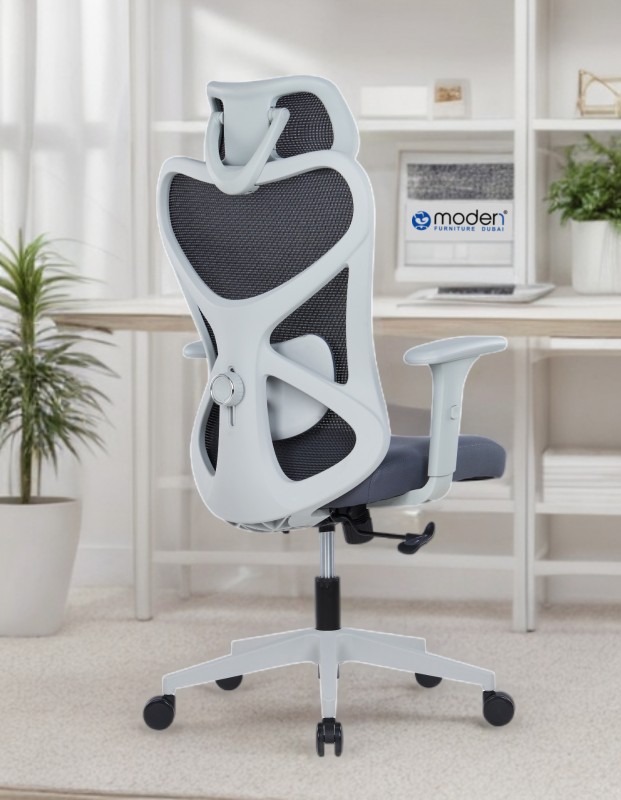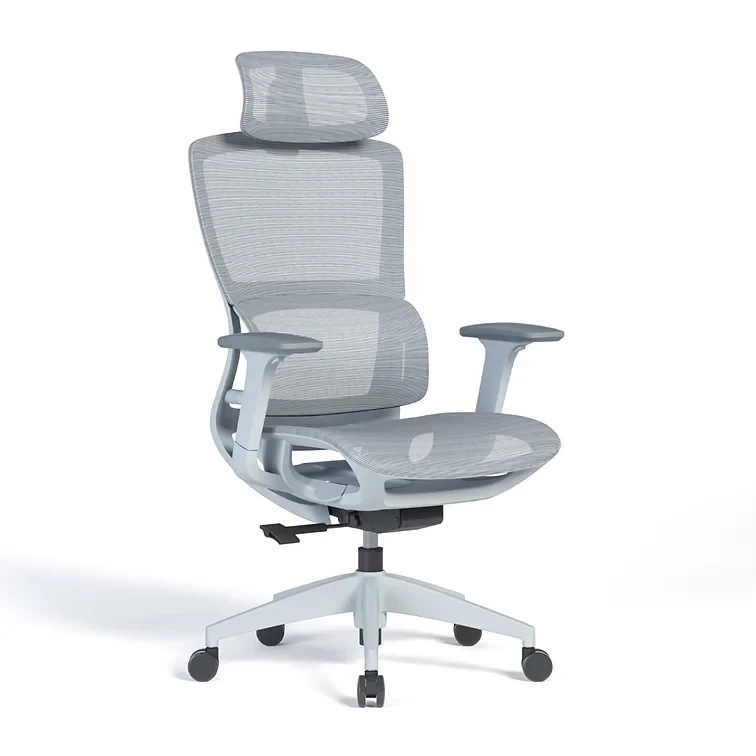
Top Features to Look for in a Conference Room Chair
Introduction
Conference rooms are more than just meeting spaces—they’re where ideas are shared, strategies are formed, and decisions are made. The right conference chair can influence how focused, comfortable, and productive your team feels during these sessions. Whether it's a quick huddle or a multi-hour boardroom discussion, chairs need to support posture, allow movement, and complement the aesthetics of the space. In this guide, we’ll walk you through the top features to look for in a conference room chair, ensuring your setup supports productivity and leaves a lasting impression.
1. Ergonomic Back Support for Long Meetings
Conference sessions often run longer than expected. Chairs with ergonomic back support ensure that attendees remain comfortable throughout. Look for a design that follows the natural curve of the spine, promoting upright posture and reducing lower back strain. Chairs with contoured backrests provide crucial lumbar support, making a major difference in user comfort over time.
2. Sleek and Professional Aesthetics
First impressions matter in a conference room. Chairs should enhance the room’s style with a clean, modern, and unified appearance. Leather, mesh, or fabric finishes in neutral tones offer a timeless appeal, while elegant silhouettes align with both executive and collaborative environments. Consistent styling communicates professionalism and attention to detail.
3. Swivel Base for Easy Collaboration
Collaboration often requires movement. A 360-degree swivel base allows users to easily turn, interact, and access different areas of the table without straining. It encourages participation and keeps conversations fluid. High-quality swivel mechanisms also improve longevity and ease of use.
4. Adjustable Seat Height for Inclusive Comfort
Everyone’s body is different. A height-adjustable seat ensures that people of varying heights can sit comfortably, with feet flat on the floor and thighs parallel to the ground. This promotes good posture and keeps participants from fidgeting or becoming distracted due to discomfort.
5. Fixed or Adjustable Armrests for Relaxed Support
Armrests can play a subtle but important role in keeping users relaxed during meetings. Fixed armrests offer clean lines and simplicity, while adjustable armrests allow for a more customized fit. Either way, arm support helps reduce shoulder tension and encourages a more open, natural sitting position.
6. Comfortable Cushioning with Breathable Material
Seat padding needs to strike a balance between softness and firmness. High-density foam or memory cushioning provides lasting support, while breathable materials—like mesh backs or ventilated upholstery—keep users cool, especially during longer sessions. This helps prevent overheating or discomfort, even in well-used meeting rooms.
7. Tilt Functionality for Subtle Recline
A slight recline can make long meetings more tolerable. Chairs with a tilt mechanism or synchro-tilt support let users shift positions naturally. This improves circulation, reduces fatigue, and allows a more relaxed posture without compromising focus or formality.
8. Compact Footprint for Better Room Layout
Conference rooms need to accommodate multiple chairs without feeling cramped. Chairs with a slim frame or armless options can help maximize seating around the table. Look for designs that provide support while maintaining a compact, space-saving shape to keep the room looking clean and functional.
9. Quiet, Non-Marking Casters
If your conference room uses rolling chairs, opt for quiet, smooth-rolling casters that won’t mark up floors or create noise. This is especially important in shared spaces or offices with hard flooring. Quality wheels improve maneuverability without disrupting the room’s flow.
10. Durability to Withstand Regular Use
Conference chairs may be used by different people daily. Chairs with strong frames, robust upholstery, and commercial-grade construction ensure they stand up to frequent use without sagging or breaking down. Investing in quality now prevents the need for frequent replacements later.
Additional Considerations When Choosing a Conference Room Chair
11. Meeting Duration and Seating Needs
Short meetings may need only basic support, while longer sessions call for ergonomic features like lumbar padding, recline, and headrests. Choose based on how your conference room is typically used.
12. Room Size and Chair Dimensions
Ensure that your selected chairs fit well within your space. Oversized chairs may overcrowd the table, while too-small options may look underwhelming. Measure room dimensions before selecting.
13. Compatibility with Table Height
Make sure chair seat height complements the height of your conference table. Users should be able to rest their arms comfortably while keeping a clear line of sight.
14. Easy Maintenance and Cleaning
In high-traffic meeting areas, spills and stains are bound to happen. Choose chairs with stain-resistant or easy-to-clean materials that can handle regular use with minimal upkeep.
15. Stackable or Movable Options for Flexibility
For flexible meeting rooms or multipurpose spaces, stackable or easily movable chairs are practical. They can be rearranged, stored, or reconfigured as needed.
16. Support for Different Attire
Whether users are in formal suits or casual wear, the chair should accommodate varying postures and clothing styles without causing discomfort, bunching, or sliding.
17. Consistency with Office Design
Chairs should match the overall aesthetic of your office or building. Coordinated furniture fosters a polished, cohesive look across workspaces.
18. Sustainability and Eco-Friendly Materials
If sustainability is a priority, consider chairs made from recycled or responsibly sourced materials. This supports a greener office and may align with your company values.
19. Budget and Value Balance
While it’s important to invest in quality, finding a balance between cost and durability is key. Chairs with essential ergonomic features and solid construction offer long-term value.
20. Vendor Reputation and Warranty
Always buy from a reputable supplier and check the warranty offered. A good warranty reflects the manufacturer’s confidence in product quality and gives peace of mind.
Recommended Products

-
UComfort Super Ergonomic Executive Office Chair – High Back – White
An elegant choice for boardrooms, the UComfort chair features full ergonomic support with high-back comfort, adjustable settings, and sleek white aesthetics that uplift any meeting space.
-
Chablo Executive High Back Ergonomic Office Chair – Grey
Designed for premium comfort, Chablo includes a synchronized tilt, cushioned seat, and sophisticated design—ideal for executive conference rooms requiring function and style.
Final Thoughts
A well-designed conference room chair enhances focus, encourages participation, and leaves a strong impression on both staff and guests. Whether your goal is comfort for long meetings or clean design for quick huddles, selecting the right chair contributes to a functional and inspiring space. With features like ergonomic support, breathable material, sleek aesthetics, and quality construction, your conference seating can become an asset—not an afterthought. Take the time to assess your space, seating habits, and room usage so you can make the best long-term investment.
FAQ
What is the most important feature in a conference room chair?
Ergonomic back support is essential, especially for longer meetings. It promotes better posture and keeps users comfortable.Should conference chairs have wheels?
Wheels can offer mobility, especially in larger rooms. Just ensure they are quiet and suitable for your floor type.How tall should conference chairs be?
They should allow users to sit with feet flat on the floor and arms resting comfortably on the table—typically adjustable height chairs are best.Do conference chairs need armrests?
While optional, armrests help reduce shoulder strain and support a more relaxed seated posture during meetings.


